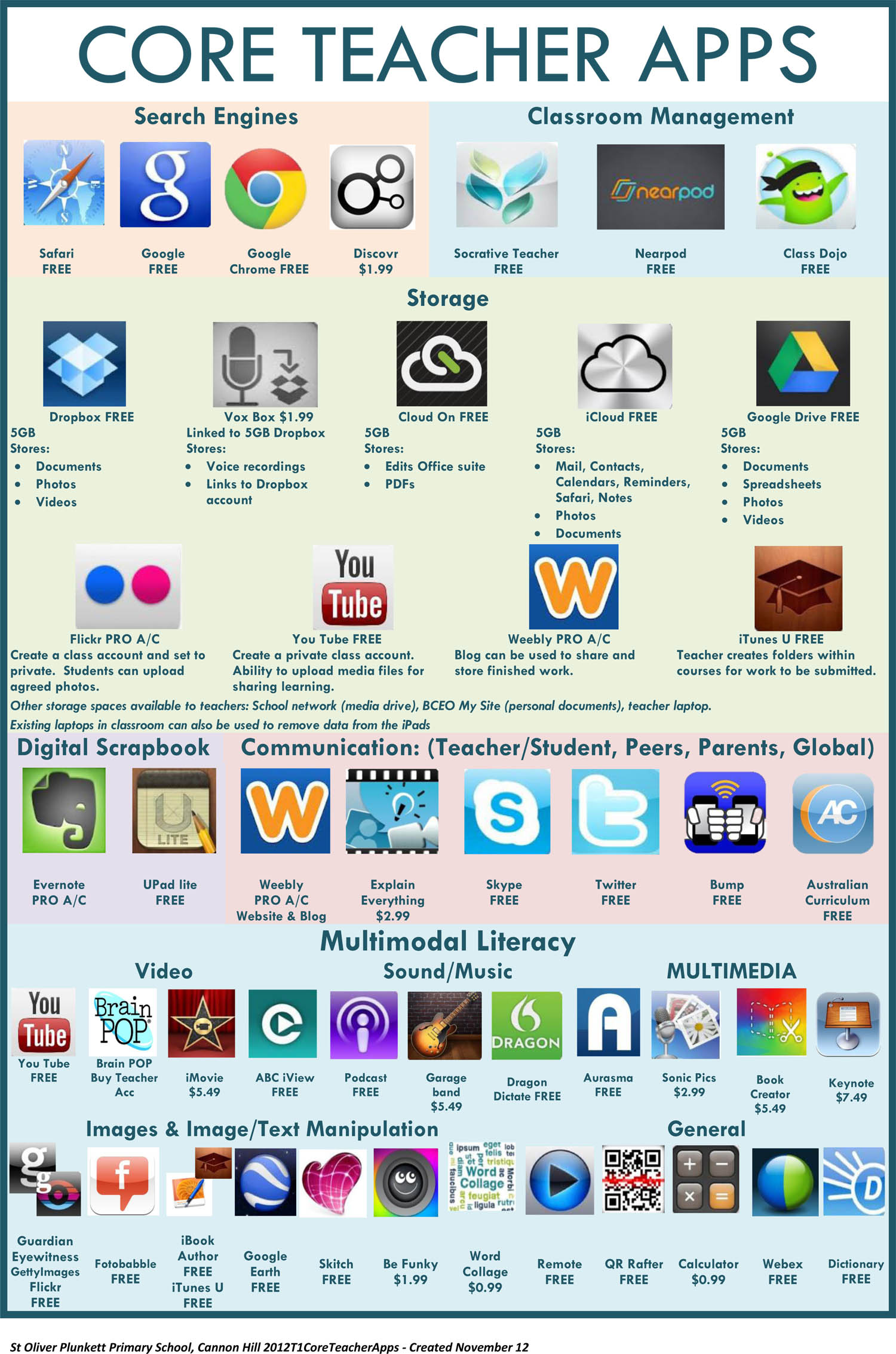Fundamental Teacher Apps
Fundamental Teacher Apps ~ Educational Technology and Mobile Learning
http://www.educatorstechnology.com/2014/05/fundamental-teacher-apps.html

Digital Literacy for St. Cloud State University
Fundamental Teacher Apps ~ Educational Technology and Mobile Learning
http://www.educatorstechnology.com/2014/05/fundamental-teacher-apps.html

The 5 Step Model to Teach Students Critical Thinking Skills
http://www.educatorstechnology.com/2014/05/the-5-step-model-to-teach-students.html
1- Determine learning objectives
This is the initial phase where you need to identify the behaviours you want your students to exhibit and work on encapsulating these behaviours in an overarching higher order thinking schema.
2-Teach through questioning
The importance of integrating questions into instruction is uncontested. Thought-provoking questions help students explore learning from different perspectives. The art of posing well-formulated questions is regaled by a set of techniques, some of which are included in this wonderful poster: Questions A Critical Thinker Asks.
3-Practice before you assess
This is where hands-on learning activities are called for. To consolidate their understandings and therefore increase the retention rate of information taught, students need to utilize all components of active learning such as simulation, experimentations,rehearsing…etc
4- Review, refine, and improve
Students’ feedback that you can garner either formally or informally constitute the backbone of your teaching procedure. It provides you with insights into areas that students need help with and also informs your teaching objectives and methodology. There are a variety of tools you can use to collect feedback from your students, check out the 8 Practical tools to easily gather students feedback.
5- Provide feedback and assessment of learning
As you need students feedback to help you inform your teaching methodology, students too need your feedback. They need to learn how they are learning and assess their overall achievement. One way to do this is to provide them with grading rubrics for self-assessment. Here are some other resources to help you provide better feedback to your students:
http://conference.pixel-online.net/ICT4LL/
Virtual Presentations available at:
http://conference.pixel-online.net/ICT4LL2013/virtual_presentations.php
While Twitter suggests that you upload an image that is 1500 x 500px, some have found that the optimal size seems to be 1500 x 421px.
 |
1. Hear a conversation from across a room, or in a crowded club. 2. Give you the ability to see in the dark. 3. Give you sight that can zoom in on things that are far away. 4. Make you better at math and navigation. 5. Allow you to download skills like in “The Matrix.” 6. Restore damaged memories. 8. Enhance focus and energy, like stimulants without the drugs. 9. Control machines with your mind. 10. Search the web and translate languages. |
MANAGING ONLINE COURSE WORKLOAD
http://www.academicimpressions.com/PDF/pdf_serve.php?i=1804&q=24756q203944kR102
44. Teaching in an online environment should be a team effort. You should be
able to call upon technology specialists, instructional designers, and many
others to help you develop and implement your course.
The newly rebranded Foursquare will get rid of its check-in features and will compete with apps like Yelp, focusing solely on local recommendations. The second app, Swarm, will have check-in capability and show users which of their friends are nearby.
http://connectedprincipals.com/archives/10418
Compliance – Do this because I told you.
Engagement – Do this because you are excited.
Empowerment – Do this because you have the power to do something meaningful for yourself.
So if we want to get to this idea of “empowering” our students, we are not going to have to be the “sage on the stage” or the “guide at the side”, but “architects of meaningful learning opportunities”. Understanding our students, their interests, abilities, and strengths, will help us better design learning that gets them to, as Mihaly Csikszentmihalyi describes, a state of “flow“.
Flow is the mental state of operation in which a person performing an activity is fully immersed in a feeling of energized focus, full involvement, and enjoyment in the process of the activity
From: Ellyssa Kroski [mailto:ellyssakroski@yahoo.com]
Sent: Wednesday, April 23, 2014 2:31 PM
To: lita-l@ala.org
Subject: [lita-l] Write a book on mobile social mktg in libraries
Hi Everyone,
I’m working with Rowman and Littlefield Publishers to develop and serve as series editor for a new book series on technology and libraries, and I’m looking for one more author! If you’re interested in writing a book on Mobile Social Marketing in Libraries please email me at ellyssakroski@yahoo.com. I’d be happy to give you more information on the series, author compensation, etc. Here’s an idea of what I have in mind for this book:
Best,
Ellyssa
________________________
Ellyssa Kroski
Writer/Librarian/Instructor/Speaker